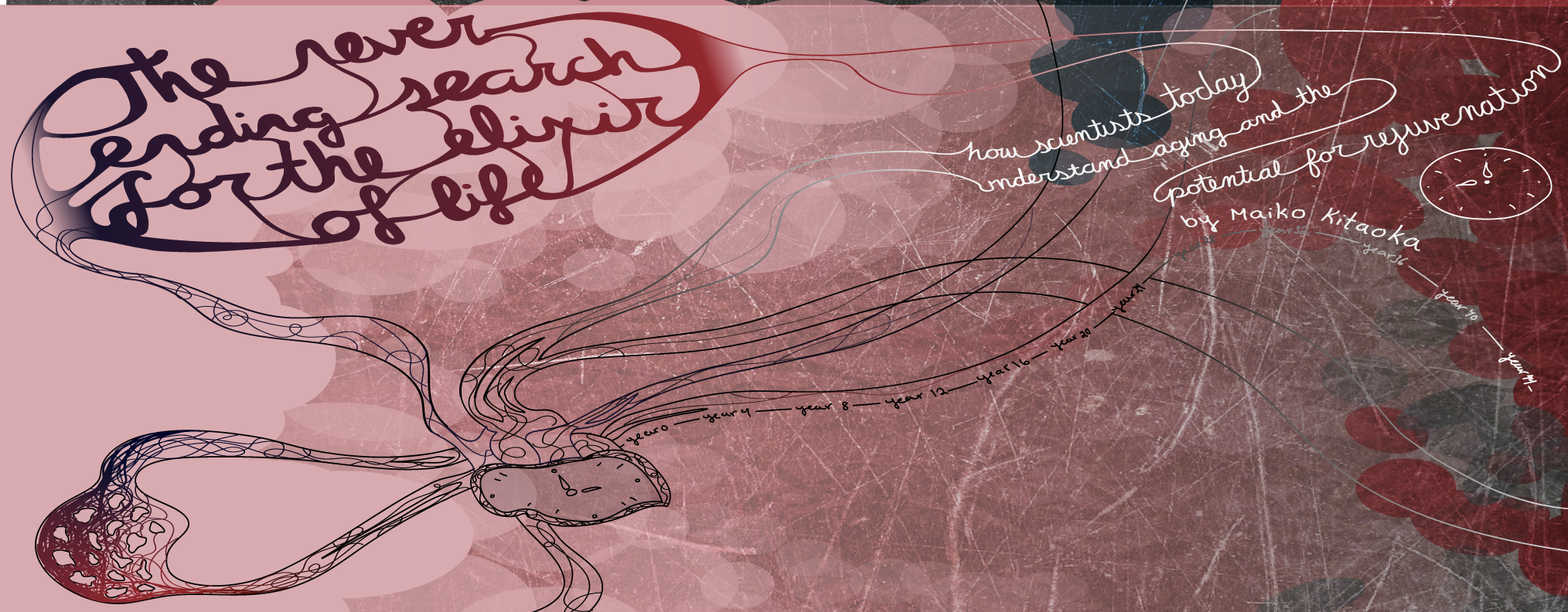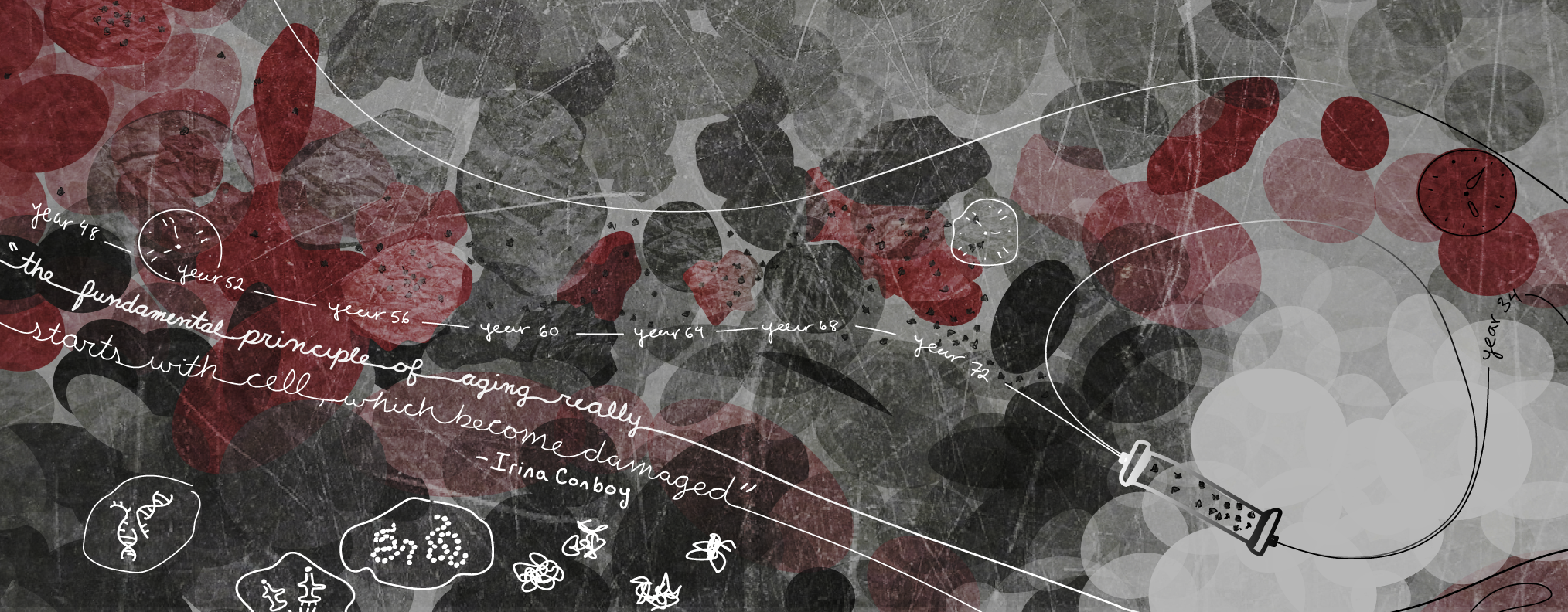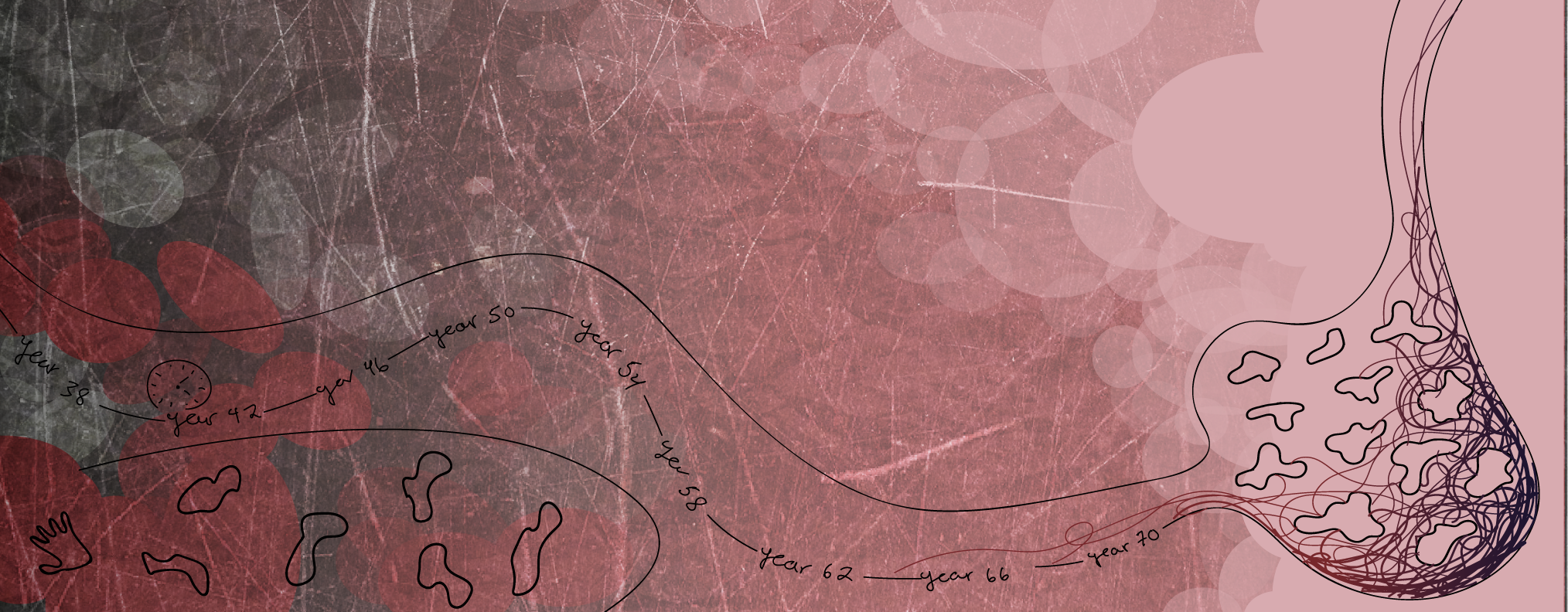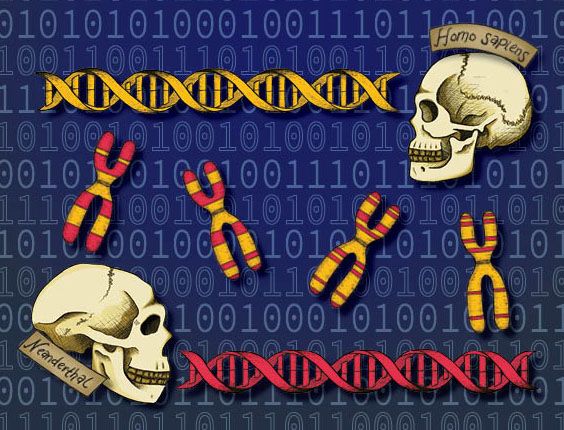The never-ending search for the elixir of life
How scientists today understand aging and the potential for rejuvenation

For centuries, European alchemists sought the philosopher’s stone, a mythical substance mentioned in the Harry Potter series. According to legend, it could turn ordinary metals into gold. But perhaps more important to most, the philosopher’s stone contained the elixir of life, a potion which would grant the drinker youth and immortality. The quest for the stone ultimately failed, both for alchemists and in Harry Potter, but the desire for an elixir of life remains to this day.
As modern scientists continue to search for remedies for aging, it has become increasingly important to understand the nature of the process itself. Is age a growing burden that gets heavier and heavier until it bends our backs, and we need a cane just to keep ourselves upright? Or is it the gradual loss of youthful robustness that leaves our bones frail and muscles atrophied? Gaining age and losing youth are two sides of the same coin. Determining which possibility is behind the aging process is a critical step to ultimately treat aging.
Harvesting youth or diluting age?
“Many people believe that, with age, we run out of ‘young things,’” explains Irina Conboy, professor of bioengineering at UC Berkeley. If aging is depletion, then the solution to aging may be replenishment. Historically, people believed those lost “young things” were body heat and moisture. In one biblical story about King David, the king’s servants brought a young Shunamite virgin named Abishag to transfer heat to him and revitalize him in his old age. Doctors continued to recommend this practice—called shunamitism after Abishag’s village—to old men well into the 19th century. Like King David’s servants, these doctors believed that close contact with young women would facilitate a transfer of warmth and youth to rejuvenate the old men—though the consequences to the young women were not considered. A certified doctor is unlikely to prescribe shunamitism today, but ideas about youthful transference and replenishment continue to shape proposed remedies for aging.
Blood specifically has been proposed as a vital source of rejuvenation. Although it may sound like another one of Lord Voldemort’s schemes in Harry Potter and the Philosopher’s Stone, there are real companies—like the California start-up Ambrosia—that sell “young blood transfusions” as a treatment for aging. Perhaps due to their seeming vampirism, such treatments have sparked controversy. After the FDA issued a warning citing “no proven clinical benefit” from the procedure, Ambrosia temporarily stopped offering young blood in February 2019, before returning its product to the market in January 2020. Despite the resistance and the lack of peer-reviewed evidence for the benefits of young blood transfusions in humans, Ambrosia and other companies claim to have enough scientific support for their treatment.
A flurry of scientific discoveries in 2005, including one from Conboy, did, in fact, claim that transferring young blood to an old mouse could rejuvenate the old mouse. Using a process called heterochronic parabiosis, two mice are surgically connected by their circulatory systems so that they share the same supply of blood. Similar to older humans, older mice typically have a harder time recovering from injuries. But if they shared blood with a young mouse, they recovered faster. In contrast, young mice that shared blood with older mice did not heal as quickly as normal mice their age. Interestingly, the Conboy lab was not able to prove that the older mouse used “young things,” like the younger mouse’s cells or proteins. Consequently, their results could also mean that the young blood flushed “old things” out of the old mice’s bodies.
Despite the assertions of Ambrosia, the use of young blood transfusions remains controversial in the scientific community.

New insights into young blood
Recent studies from Bay Area labs have provided evidence for both sides of this debate on whether aging involves gaining age or losing youth. In 2018, members of Saul Villeda’s lab at UCSF identified a protein, called Tet2, that naturally declines with age in the mouse brain. If the protein’s function was blocked in the brain, the mice had a harder time learning and remembering tasks, reminiscent of older mice. They also could not make new brain cells. On the other hand, boosting the levels of Tet2 gave the mice a big memory boost, providing one piece of evidence that it’s possible for a “young thing” to combat the effects of aging.
In contrast, a new study from Conboy’s lab, led by graduate student Melod Mehdipour, demonstrated that older mice could be rejuvenated by diluting their blood plasma to get rid of the “old things.” The researchers diluted the blood plasma of old mice using a procedure similar to therapeutic plasma exchange (TPE), which replaces half of the blood plasma in older mice with a saline solution containing albumin, the main component of blood plasma. After just a single procedure, the cells in the muscles, livers, and brains of treated mice demonstrated an increased ability to grow and proliferate, when compared to untreated older mice. “If you dilute age-elevated excessive molecules that have become counterproductive, all of the youthful genes and proteins are reset to younger stage,” Conboy explains.
Although young blood transfusions remain controversial, TPE is already FDA-approved and used in the clinic to treat autoimmune disorders, drug overdoses, and acute rejection responses after an organ transplant. Granted, these are not age-specific diseases, but the Conboy team and their collaborators hope to have some new information in the coming year on using TPE to treat age-related diseases, such as neurodegenerative disorders or cognitive decline. Even though the results from the Conboy lab do not always show a complete reversal of the effects of aging, Mehdipour explains that there is a “slowing down of the progression of the diseases” that offers hope for those suffering from these devastating conditions. Furthermore, TPE treatments aren’t solely limited to brain-related disease. As Mehdipour points out, “blood affects the body as a whole, so I think a lot of the body can be rejuvenated.”
Dilution restores balance to cells
How does TPE and its dilution effect work to rejuvenate the body? Aging-related molecules in our blood come from damaged cells. Cellular and tissue damage is inevitable. “We live in an entropic environment and damage accumulates through such indispensable processes as eating and breathing,” says Conboy. Specifically, oxidative phosphorylation, an essential process that generates energy in the mitochondria, can lead to various injuries to a cell, including DNA and proteomic damage. The proteome encompasses all of the proteins that our cells make under specific conditions, and understanding its composition is key to unraveling the function or dysfunction within a cell or tissue. “The fundamental principle of aging really starts with cells, which become damaged, and so the proteome is elevated. Through immune cells and inflammation, eventually all of these excessive proteins go into the bloodstream and propagate aging throughout the body,” Conboy explains.
The group created proteomic datasets to look at how proteins change after TPE treatment in young and old mice. Given that their procedure dilutes blood, the team expected a global decrease of most proteins, but what they found was “nothing of the sort,” graduate student Colin Skinner describes. While some proteins were lowered, the dilution also caused other proteins to increase their levels—a result that surprised Skinner and his colleagues. It’s as though the dilution gave some proteins the space that they needed to signal to their neighbors properly rather than leaving the proteins packed so tightly that they couldn’t make the right connections.
The changes in protein concentration observed after blood dilution treatment may relate to changes that occurred in the cells themselves. Tissues maintain a vital population of eternally young stem cells to replace damaged cells. “Cells accumulate damage all the time, but when you’re young you don’t notice that, because your stem cells are functioning, and the damaged cells are replaced with the healthy ones,” says Conboy. For example, if a younger and older person go to the gym, they both might experience the same aches and pains post-workout due to tissue damage. But the younger one will recover from the aches more quickly, because their stem cells are readily available to regenerate the tendons, muscles, and ligaments damaged during exercise. Damaged cells elevate protein levels which further increase a tissue’s damaged state and prevent tissue stem cells from functioning properly. The blood dilution treatment could be diluting the proteins expressed by damaged cells, allowing stem cells to re-establish the gentle balance between damage and regeneration.

Resetting a cell’s age
What makes stem cells special? How are certain cells able to rejuvenate tissue while other cells have to cope with the accumulated damage? UC Berkeley Associate Professor of Molecular and Cell Biology Elçin Ünal and a pair of graduate students may have found an answer to these questions using an unlikely model organism: Saccharomyces cerevisiae, the budding yeast that is also responsible for making bread and beer. Remarkably, this humble single-celled organism undergoes cellular processes similar to human cells.
Ünal started working on cellular rejuvenation with budding yeast as a postdoc. She looked at gametogenesis, the process of creating gamete cells necessary for reproduction. She recalls that she “did a very simple experiment to ask a simple question: do the gametes inherit the age [of the mother cell] or do they reset?” It was a very “black-and-white experiment”—the new gamete cells are born young because they don’t inherit any age-associated damage, despite the age of the original cell. Something was happening during the process of gametogenesis that prevented this inheritance, but how does a cell reset its age?
Ünal credits new live-imaging microscopy advances for allowing her lab and others to tackle the big question of how gametes reset their age, by allowing them to view gametogenesis and rejuvenation in real time. Rather than just looking at “before and after makeover” images, as Ünal puts it, they can use live imaging to see what is happening in between those two snapshot. Using live-imaging techniques, graduate students Grant King and Jay Goodman found that, during gametogenesis, clusters of age-associated proteins are sequestered away in a compartment separate from any of the new gamete cells and eliminated. New cell membranes surround the four newly formed gamete cells as well as the fifth compartment. It’s a “new example of asymmetric cell division, which produces four gametes and a fifth compartment full of the damage that’s ready for the cell to eliminate,” King points out. There’s a robust “active exclusion ensuring that the damage is left outside,” he emphasizes. It’s unclear exactly what that damage recognition signal might be, but sequestration happens so consistently that it cannot be random.
It’s also unclear what the relationship between aging and damage markers is. “One of the ongoing debates is whether these factors are actually causative versus factors that arise just as a consequence of aging,” says Goodman. It’s a big question that might be redefined through research labs like Ünal’s that, in Goodman’s words, “try to decouple these markers from the process of aging itself. Then we can ask what would happen if gametes, which are basically at age 0, inherit these age-induced factors?” Ünal herself emphasizes that decoupling the two is challenging but key “to really understand what goes wrong and understand it in a system that naturally rejuvenates” such as in budding yeast gametogenesis.
It’s not just about you (or aging)
The search for the philosopher’s stone was often a solitary one, although many alchemists were looking for the same prize. Perhaps that’s one of the key reasons why their searches failed to produce new discoveries. Many projects would not ultimately be successful without collaborations, both within and outside a particular lab. King and Goodman, for example, started working on separate projects in the Ünal lab, but realized over time that their work converged to unveil a key mechanism of cellular rejuvenation. Both the Conboy and Ünal labs are enthusiastic about collaborations and the need to take a broader approach to the aging field. Rather than just focusing on one particular age-associated factor, there’s a growing realization in the field that many factors and proteins are involved in cell, tissue, and organismal rejuvenation. It’s also growing more evident that the key to understanding aging involves a careful balance between the loss and accumulation of proteins with high or low levels.
Really understanding all of aging factors means using approaches from other biological fields to “unmask the larger patterns at play,” Mehdipour and Skinner point out. When they think about their plasma dilution experiments, they realize that there are far are more factors involved than they could possibly probe without more computationally intensive techniques than are typically used in their field of study. Really understanding means not only utilizing and developing the newest and most accurate methods but also collaborating with many different kinds of scientists. Conboy shares this philosophy and can't wait to work with computer scientists, computational biologists, physicists, and more who can help parse through her vast data more efficiently and accurately. Conboy has already started this effort in her lab by building better mathematical models and algorithms to analyze and understand their proteomics data, identify key patterns, and aim for the next best targets for their research and new therapeutic treatments for aging.
Immortality and longevity have captivated humans for centuries. We’ve come a long way from the philosopher’s stone or prescribing close contact with young virgins to restore heat, but we’re just starting to understand the molecular causes of the entire aging process. Now there are new treatments being developed to treat age-related diseases based on work from the Conboy, Villeda, and Ünal labs, as well as others. Still, immortality will probably stay out of reach and aging is inevitable. Rather than extending lives far behind our current lifespans, aging treatments will help us to make the most of the years we have now and ahead of us.
----- Maiko Kitaoka is a graduate student in molecular and cell biology.
This article is part of the Spring 2021 issue.





